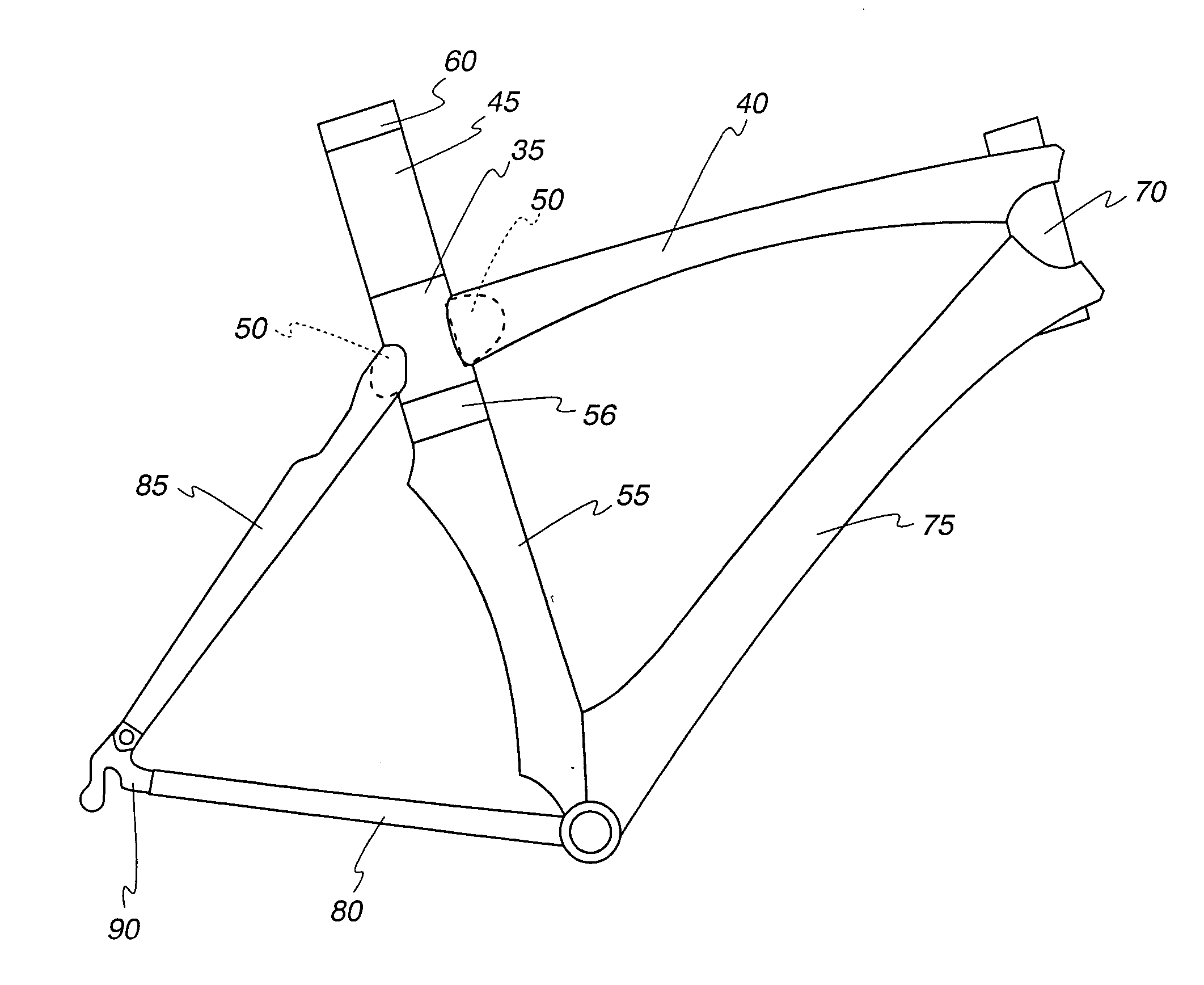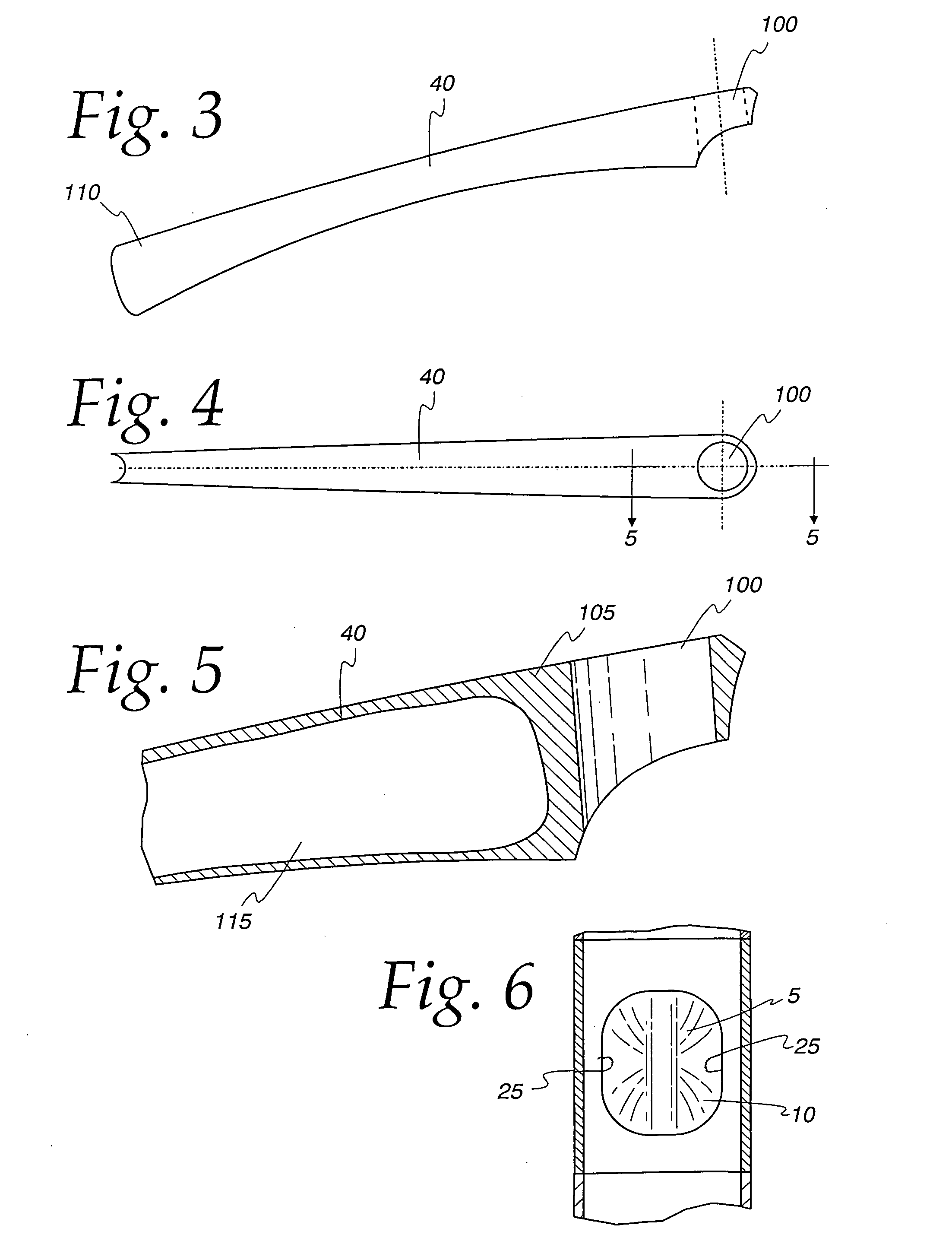Customizable carbon frames for bicycle or other vehicles
a technology of carbon frames and bicycles, applied in the direction of supporters, roofs, unicycles, etc., can solve the problems of limiting factors regarding one's ability to customize a bicycle, difficult to bond different materials at the joints, and not allowing for any angle variability of the mating frame, etc., to achieve the effect of improving the ride quality and being easy to apply
- Summary
- Abstract
- Description
- Claims
- Application Information
AI Technical Summary
Benefits of technology
Problems solved by technology
Method used
Image
Examples
Embodiment Construction
[0018] This invention is concerned with an all composite vehicle frame, and in particular a bicycle frame made of joined parts comprising carbon fibers impregnated with resin, for example. Once the parts are assembled, the resulting frame provides the appearance of a molded carbon frame, or monocoque frame. This frame is completely customizable; any shape and size of tube, and any angle between tubes, can be used in the manufacturing process without limiting customization. In a preferred embodiment, rider information is imputed into the bike building process as weight of the rider, height of the rider, flexibility, intended usage, and riding preferences, among other factors. Based upon these parameters, for example, customized bike manufacturers customize the bike's tube set to enhance the frame's ride quality.
[0019] Segments of the customized frame of the present invention are joined using tabs 50 imbedded into or molded as part of an anchor. Each tab is integrated into the anchor...
PUM
| Property | Measurement | Unit |
|---|---|---|
| humidity | aaaaa | aaaaa |
| temperature | aaaaa | aaaaa |
| attachment angle | aaaaa | aaaaa |
Abstract
Description
Claims
Application Information
 Login to View More
Login to View More - R&D
- Intellectual Property
- Life Sciences
- Materials
- Tech Scout
- Unparalleled Data Quality
- Higher Quality Content
- 60% Fewer Hallucinations
Browse by: Latest US Patents, China's latest patents, Technical Efficacy Thesaurus, Application Domain, Technology Topic, Popular Technical Reports.
© 2025 PatSnap. All rights reserved.Legal|Privacy policy|Modern Slavery Act Transparency Statement|Sitemap|About US| Contact US: help@patsnap.com



